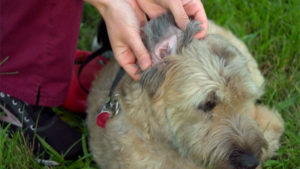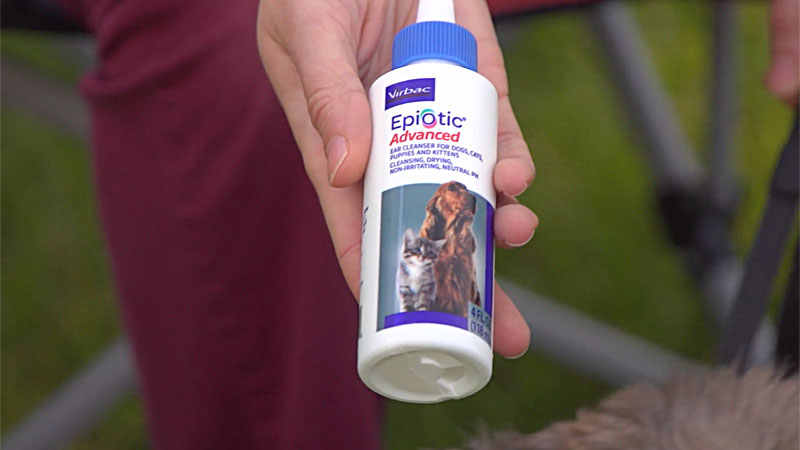rving with pets
Pets and Car Sickness with Dr. Fitz on 'Paws on Board'
Dr. Fitz: Welcome to another episode of “Rollin’ on TV’s” “Paws on Board.” I’m Dr. Fitz, and this is Zoe. Does your dog ever get an ear infection after swimming? Many of those that take their dogs RVing enjoy stopping at lakes and rivers for some time to cool off. What we don’t enjoy is the continuous shaking of the head, scratching, and itching at the ears that comes a few days after being in the water. Why does this happen?
Well, not every dog will experience an ear infection after swimming. Those that do generally have other predisposing factors that contribute to an infection. Dogs with preexisting allergies, significant amounts of hair within the canals, like poodles, or dogs that had a recent ear infection are more likely to have a problem. Your dog may have an infection if you notice these signs: repetitive shaking of the head, scratching at the ears, or even rubbing the side of their face on the ground. Some dogs may have ears that are painful to the touch. If you flip the ear flap over and you see redness of the skin, you might notice a foul odor and even some discharge.
 The best thing to do in the case of an ear infection is, of course, get your pet to a veterinarian. Your vet can assess the severity of the infection, what’s causing the infection, such as yeast or bacteria, and send you home with the appropriate treatment. Every ear infection is different, but there are some ways that you can try to prevent this at home. First, make sure that your dog’s ears dry out completely after swimming. This can include cleaning their ears with a gentle drying cleanser and gently drying with cotton balls or a soft cloth. Drying the hair on the outside of the ears can be helpful as well.
The best thing to do in the case of an ear infection is, of course, get your pet to a veterinarian. Your vet can assess the severity of the infection, what’s causing the infection, such as yeast or bacteria, and send you home with the appropriate treatment. Every ear infection is different, but there are some ways that you can try to prevent this at home. First, make sure that your dog’s ears dry out completely after swimming. This can include cleaning their ears with a gentle drying cleanser and gently drying with cotton balls or a soft cloth. Drying the hair on the outside of the ears can be helpful as well.
Second, your pet should not swim if they have a current ear infection. This has the potential to further irritate the ears and worsen the infection. If your pet has regular ear infections, talk to your vet about maintenance treatment. Your pet might benefit from regular steroid drops to reduce irritation or even benefit from treatment of underlying allergies.
 To appropriately clean your dog’s ears, first, ensure that you have a pet-safe, gentle drying cleanser. You should not use peroxide, alcohol, or vinegar to clean your dog’s ears. These can over-dry the canal and irritate the eardrum, causing even more discomfort. Next, you lift your dog’s earflap and find the opening to the canal, which is generally at the bottom. You’ll gently squeeze the bottle to fill the canal with fluid. Just try not to touch the nozzle to the ear to avoid contaminating the bottle. Feel just behind your dog’s ear for slightly firm cartilage. It’ll feel just like the cartilage of your nose. Gently massage this to move the fluid through the canal. You’ll actually hear a slight squishing sound as the fluid moves around. Then allow your dog to shake his or her head to remove the fluid. You might wanna do this outside, in a bathroom, or in a garage, an area that’s easily cleaned ’cause this is the part that can get a little messy when they shake. Finally, you’ll use some cotton balls to gently clean the external part of the ears.
To appropriately clean your dog’s ears, first, ensure that you have a pet-safe, gentle drying cleanser. You should not use peroxide, alcohol, or vinegar to clean your dog’s ears. These can over-dry the canal and irritate the eardrum, causing even more discomfort. Next, you lift your dog’s earflap and find the opening to the canal, which is generally at the bottom. You’ll gently squeeze the bottle to fill the canal with fluid. Just try not to touch the nozzle to the ear to avoid contaminating the bottle. Feel just behind your dog’s ear for slightly firm cartilage. It’ll feel just like the cartilage of your nose. Gently massage this to move the fluid through the canal. You’ll actually hear a slight squishing sound as the fluid moves around. Then allow your dog to shake his or her head to remove the fluid. You might wanna do this outside, in a bathroom, or in a garage, an area that’s easily cleaned ’cause this is the part that can get a little messy when they shake. Finally, you’ll use some cotton balls to gently clean the external part of the ears.
So gently clean. You should never insert a Q-tip deep into the ear canal. A dog’s canal is actually L-shaped, unlike ours, and wax can actually be pushed further into the canal where it’s difficult to remove. If you’re traveling with your pet, keep an ear-cleaning kit with you if your pet likes to swim. Preventing an infection can be the difference between a fun, peaceful trip or an itchy, miserable one.
For more information about traveling safely with your pets, visit RollinOnTV.com. Tune in next time for more pet health information. I’m Dr. Fitz. This is Zoe. Thanks for watching “Paws on Board.”
Do you have ideas or questions for Dr. Fitz? Marissa can be reached directly at drfitz@rollinontv.com.

